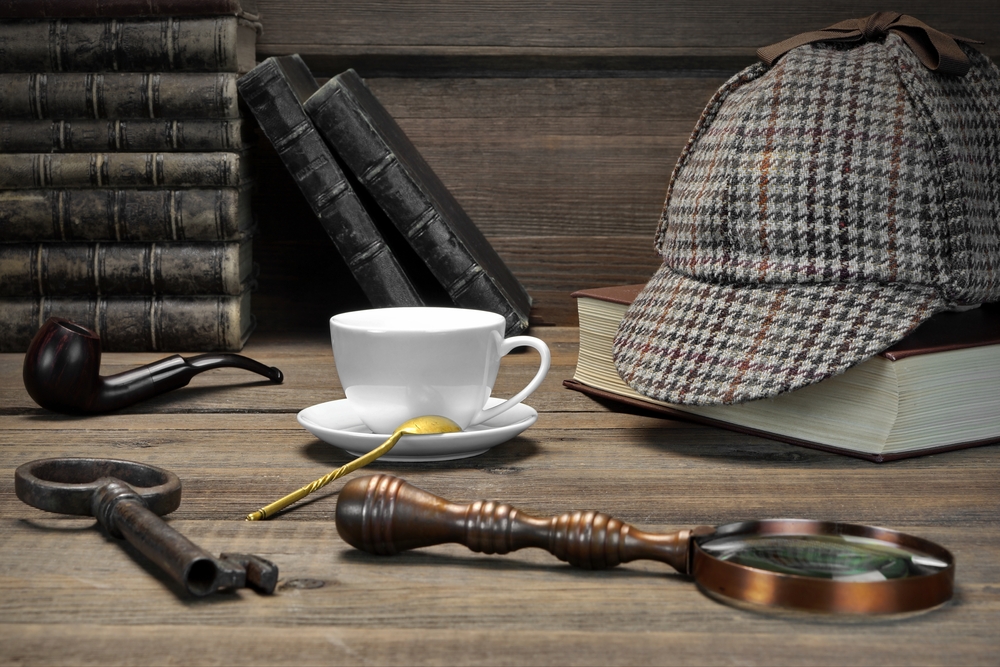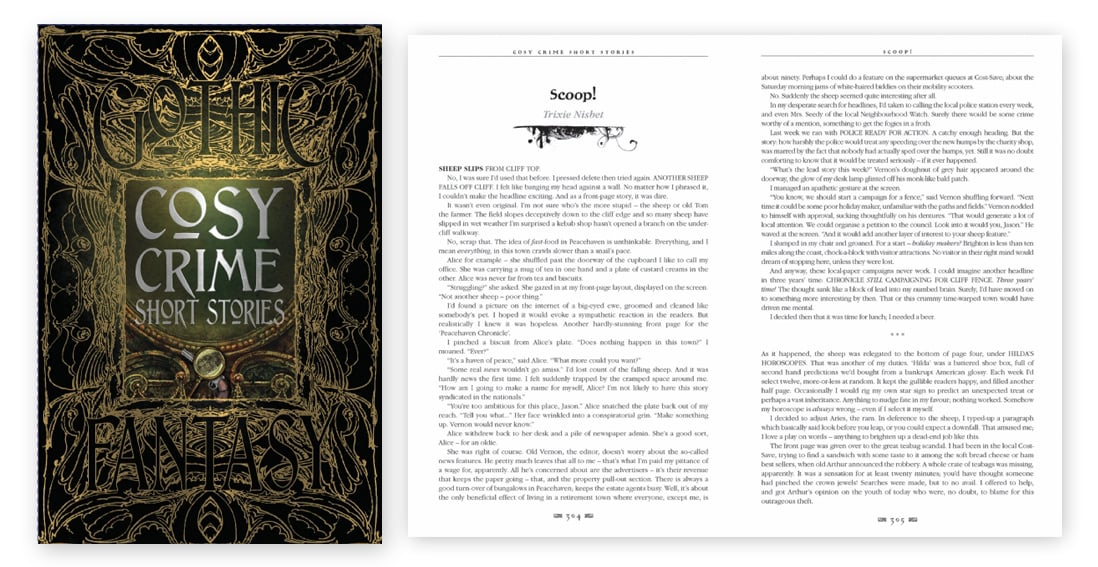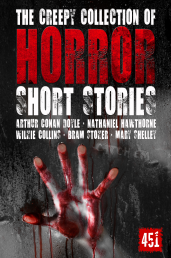Our new Cosy Crime Short Stories anthology is now available to buy from our website and includes work by both contemporary authors and classic authors from the genre, including G.K. Chesterton and Arthur Conan Doyle. In the first part of this Q&A with some of its authors, we discovered some of the ideas that led to the stories featured in the book. For this next instalment of the Q&A, the authors speak more about their writing and also provide a few more names for your reading list in telling us which other stories from the genre they’ve enjoyed!

What are your favourite Cosy Crime stories?
C.B. Channell
I enjoy a wide variety of cosies, mostly books but also television series. Earlene Fowler, Diane Mott Davidson, Susan Wittig Albert are some of my favourite authors. I also enjoy period pieces, such as Ms. Fisher’s Murder Mysteries, and Essie Davis did a fine job as that irrepressible sleuth.
Tom Mead
With every mystery story I write, I’m trying to recapture the thrill I got at the end of John Dickson Carr’s The Hollow Man. The Black Spectacles, The Red Widow Murders and Death in Five Boxes are just a few of his brilliant, brilliant novels. Among more contemporary authors, I tend to favour Paul Halter – the John Pugmire translations are excellent. Helen McCloy, Christianna Brand and Edward D. Hoch are just a few others I admire. I really can’t recommend them enough.
Trixie Nisbet
Agatha Christie is of course the queen of cosy crime, and I’ve read all her stories. I’d recommend Five Little Pigs as her best novel, and Witness for the Prosecution as her best short story. I like any form of the puzzle whodunnit, especially if the criminal is revealed with scrupulous logic but turns out to be someone I hadn’t suspected.
Michael Martin Garrett
Stoner noir is an underappreciated little genre. Thomas Pynchon’s masterful Inherent Vice and The Coen Brothers’ memetic The Big Lebowski are both personal favourites that served as early inspirations when thinking about my character Ray and his world (in ‘Twenty Column Inches’). Like those, there’s a zaniness grounded by an underlying melancholy. Both also have an important sense of time and place in their California settings, an attention to setting that I’ve tried to bring to the peculiar land of Central Pennsylvania.
Philip Brian Hall
I am fond of tales of clerical sleuths, ranging from Cadfael to Father Brown by way of Giordano Bruno and the Grantchester mysteries. Perhaps semi-rural settings and dogged intellectual inquiries offer a worthwhile alternative to modern shoot-’em-up detectives, just as cryptic crossword puzzles may interest people who might not care so much for computer games?
E.E. King
I love the writers Saki, John Collier, Roald Dahl, O. Henry, Ray Bradbury, Arthur Conan Doyle and Shirley Jackson. ‘A Rose for Emily’ by William Faulkner has haunted me since I read it many, many years ago. I love having the revelation contained in the very last line. It’s always hard when I’m asked to list my ‘favourite authors’, even in a specific genre, because there are so many. Later I always remember a few I forgot to mention and feel guilty… The movie Don’t Look Now, a 1973 film adapted from the short story by Daphne du Maurier (another great writer) has lingered sinisterly in my imagination. It takes place in Venice which is creepy on the sunniest of days. Some cities lend themselves especially well to horror: Venice, with its small, ancient ghost-ridden, watery alleyways; small Southern American Towns, with their isolation, humidity, and witchy hanging mosses; and of course Cosy English Villages where murder always lingers just out of sight, steaming beneath every tea cosy.
Can you tell us a little about your writing process?
 Stephanie Bedwell-Grime
Stephanie Bedwell-Grime
My writing process changes with my schedule. I find it helps my productivity to have writing materials with me at all times, even if it’s only pen and paper or an app on my phone. The first draft is the most fun because I’m discovering the story as I write. I often let the story settle in my mind for a while before coming back to do a second draft.
Annette Siketa
Early last year, I had the pleasure of meeting David Duchovny of X-Files fame, and he was fascinated as to how I, a blind person, carved out a career as an author. The following is the abridged version of my answer: on the practical side, I use a text-to-speech program called ‘Jaws’, which enables me to use a computer, including navigating the Internet, with considerable ease. Information on Jaws can be found at www.freedomscientific.com. On the creative side, well that’s a little more difficult to explain. Try this experiment. Put on your favourite movie and watch it blindfolded. As you already ‘know’ the movie – who does what, where, & when etc, your mind compensates for the lack of visualisation by filling in the ‘blanks’. Now try it with something you’ve never seen before – the six o'clock news for example. Not so easy to fill in the blanks now, is it? By this point you’re probably going bonkers with frustration. But do not remove the blindfold. Instead, give your imagination full reign so that you create a sort of movie in your head. This will give you an idea of how I create my stories. Oh if only Steven Spielberg could read my mind!
Elise Warner
I prefer working right after breakfast – a mug of freshly brewed Colombian coffee is a must. I usually write at my computer but I do have written notes, character studies and sometimes lines or paragraphs. Sometimes one of the characters takes over. My intended bad guy for my first novel refused the job, I had to find another villain – he was right. If I manage a seat by myself on a long bus ride, I can do minor revisions.
Nancy Sweetland
My writing process is different for every story. I’m a pantser but wish I could plot ahead; I just have to follow the story’s characters, which often leads to massive re-writing before it’s finished. Not efficient, I know – but I don’t often know the ending until I get there.
B. David Spicer
My writing is fueled by tea. I brew up a pot of Darjeeling, then find some era-appropriate music to listen to while I write. For instance, if my story is set in the 1940s, I might listen to The Andrews Sisters or Bing Crosby. I find that the music helps me visualise the story as I’m writing it, and hopefully that carries through to the reader. I’m a firm believer in writing the whole story before doing any editing, whether it’s a novel or a short story that I’m working on. Write first, edit later. I shoot for 2000 words a day, but that’s more of a guideline than a rule. Some days yield 6000 words, some days yield 0 words.
Sarah Holly Bryant
I like to write by hand. Having been a diary-keeper as a young girl and teenager, I've never stopped keeping a pen and journal near my bedside. I generally have three sections in each of my notebooks: Ideas. Lines/Dialogue. Writing. In this way I can scribble down a basic idea for a story, lines that I think I can build characters from and have some fun just free-writing.
Louise Taylor
As a working mother, I write whenever I can find time. I usually spend a chunk of time on the weekend. On weeknights, I often sit with my kids (both teens) and write while they are doing their homework. Luckily, their dad loves cooking, so he very frequently makes us dinner. When I get a new idea, I like to etch out the general story and then go back and ‘fill in’ the plot and characters. I comb through the story over and over again until it’s filled in and smoothed out. Sometimes I’m not sure how it’s going to end. The storyline may lead to an ending that’s different than what I had in mind when I began writing. I belong to a small writing group, which is great, because one can get so close to the story that it becomes hard to see errors or contradictions in the plot. In a recent piece, I changed a character’s name from ‘Sal’ to ‘Hal’ without even being aware of it – the writing group is very good at picking up on stuff like that. Writing is one of my greatest pleasures, for so many reasons – the imaginative process, the privilege of playing with words and grammar and plotting. I look forward to the time I can sit down and work. Sometimes I like to go to a café to work – writing is such a solitary process. I find it quite companionable to be sitting in the midst of others, each working on their own project.

Looking for Part 1 of this Q&A with the book's authors? You can find it here.
Links
- Check out the full list of authors in this anthology, and the Haunted House anthology that published alongside it, here.
- Cosy Crime is available to buy through our website here.
- You can find the full collection of Gothic Fantasy anthologies here.
Images courtesy Shutterstock.com




